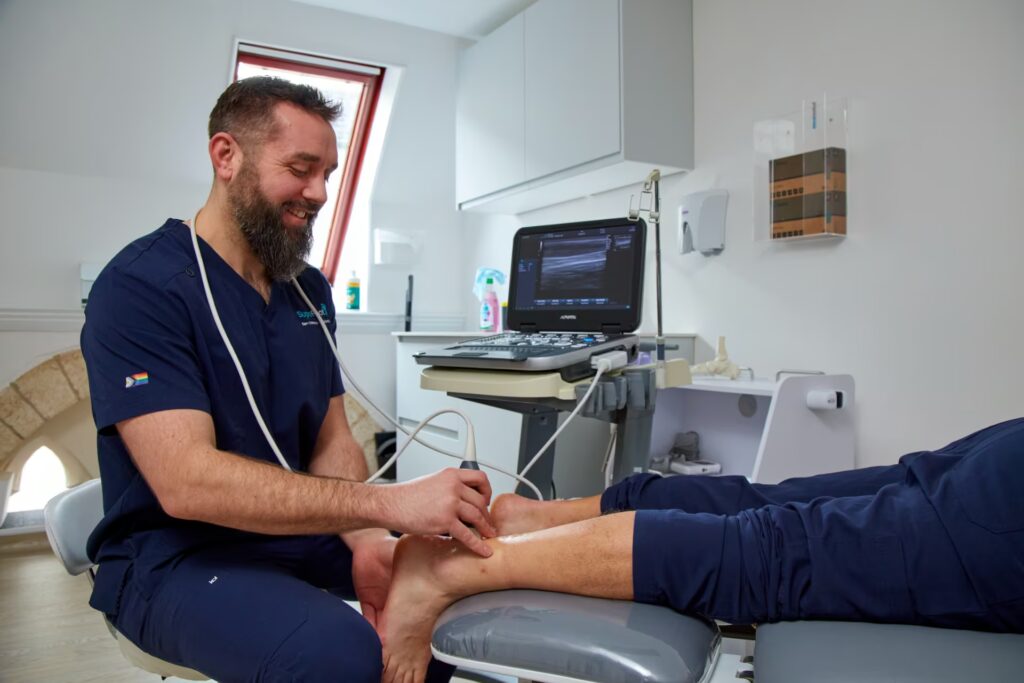
Foot & Joint Pain
Foot and joint pain refers to discomfort or soreness in the feet or joints, which can result from various conditions. It can affect the bones, muscles, tendons, or ligaments in the feet, as well as the joints in areas like the ankles, toes, or knees.
Some common causes of foot and joint pain include:
- Arthritis: Inflammation in the joints, often causing stiffness and pain.
- Plantar fasciitis: Pain in the bottom of the foot, especially in the heel, from inflammation of the tissue.
- Bunions: A bony bump at the base of the big toe that can cause pain when walking.
- Tendonitis: Inflammation of the tendons, often from overuse or injury.
- Flat feet or high arches: These can affect foot alignment, leading to joint pain and discomfort.
Treatment can include rest, ice, stretching exercises, wearing comfortable shoes, or seeing a podiatrist for more specialised care. We can carry out a musculoskeletal assessment with gait analysis to investigate the causes of the condition, as well as creating an individual treatment plan.